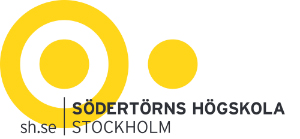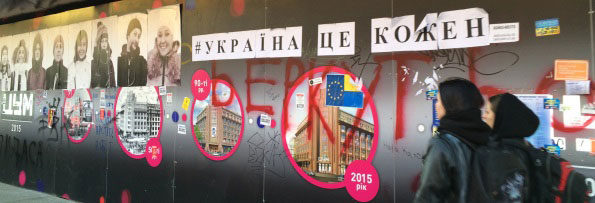Russian Military Threat to Ukraine: Will Putin Invade? An Explainer

Disinformation and fog of war surround the latest iteration of Russia-Ukraine crisis, ongoing since 2014. A lot seems unclear to Western public. What exactly is going on? Why? What can happen? Here is a short, detailed and factual explainer.
- What is happening in the Russia / Ukraine region?
Right now we are observing a further development of the situation that started in 2014 when Russia used the internal instability in Ukraine (which the Kremlin itself had helped to brew by trying to subvert Ukraine’s rapprochement with the EU) and embarked on annexation of Crimea and hybrid invasion of the easternmost tip of the Ukrainian Donbas. As we have seen several times in previous years (most notably in spring 2021), Russia is amassing troops on Ukraine’s borders to create tension.
However, what appears unprecedented is the number of equipment and manpower accumulated as well as the diversity of directions at which this is happening. According to estimates, the forces amassed were already over 120,000 by late January and have furthermore grown to over 130,000 by mid-February. The accumulation continues. Apart from the conflict zone in Donbas, and the Crimea now turned into a fortress, the troops threaten vast new areas very far from the current frontline. The regions of Kharkiv (a key and symbolic industrial, educational and military outpost in the East of Ukraine, just 40 km away from Russia), Sumy and Chernihiv all have border with Russia and witness accumulation of troops in the neighbouring Russian regions.
Moreover, a major difference compared with previous examples of such Russian behaviour is an active involvement of Belarus.
Following the large-scale 2020 protests in the country that the strongman Aliaksandr Lukashenka’s regime managed to suppress brutally at the price of complete isolation from the West, Belarus has announced a large-scale integration with Russia, something that the Kremlin had long demanded to no avail. A part of this de-facto Anschluss is military integration, so Russia is transferring significant air assault, anti-air defence, short-range missile, mechanized and tank units into Belarus under the pretence of drills scheduled for 10-20 February 2022. Some of the units are moved from as far as the border with China. Russian military equipment and soldiers have been seen just some 20-40 km away from Ukraine’s border with Belarus, which sparks speculation of a potential invasion into Ukraine from the north, through the wilderness of the Prypyat marshes and around Chernobyl. Ukraine’s capital Kyiv would be highly vulnerable to such unconventional attack—contrary to the historically traditional routes of Russian invasions into Ukraine from north-east, via Sumy–Konotop–Nizhyn.
All of it is happening against the background of intensified militant rhetoric from the regime-controlled media and officials of both Russia and Belarus. Lukashenka has repeatedly made statements such as “we do not seek war but the West is pushing us to such actions” and accusing Ukraine of amassing “nationalist-radicals” at its border (in reality, Ukraine’s border with Belarus remained completely demilitarized and sparsely guarded up until the recent migrant crisis Belarus artificially staged against Poland). On Russian television, the number one information source for 74% Russians in 2020, one can hear hosts of Russia Today talk shows exclaim “we will take your land and burn you [Ukrainians] in downtown Kyiv together with your Constitution”. Russian government is demanding concessions from NATO such as written guarantees the alliance would abandon its open-door policy and even withdraw troops from member states such as Bulgaria and Romania; countries of the former Warsaw pact such as Poland and Czechia are called “orphaned” as a result of the block’s dissolution. All in all, what is happening is a combination of a highly aggressive behaviour with likewise rhetoric, suggesting either an actual preparation for a new invasion and opening of a new war theatre against Ukraine in addition to the relatively limited and well-contained areas in Donbas, or an attempt to win concessions by threats.
- What may Russia’s intentions be?
One thing we have learned about the behaviour of the current Russian regime is that it relies on improvisation. There may not be one definitive plan they are trying to put in action no matter what. Rather, the Kremlin tries different ways and applies different means, both peaceful and violent, to attain its strategic aims. When one method fails to produce result, Russia is likely to try another way or step back and focus on another area.
Regarding the aims, one may try to gauge them from the desirable outcomes of Russia’s demands regarding NATO and Ukraine. One obvious aim is to demonstrate NATO as incapable and the West as weak and passive, and thus to increase its own global standing. Simultaneously, the international community would go back to the world divided into the spheres of influence, and Russia would clearly lay claim to the sphere formerly controlled by the Soviet Union. Eventually, this would lead to the revocation of what Vladimir Putin openly declared the greatest geopolitical catastrophe of the twentieth century: the dissolution of the Soviet Union. With Belarus firmly in its embrace and following a triumphant suppression of Kazakhstani protests just weeks ago, Moscow may feel close to this aim as never before.
The other aim is of course Ukraine-specific. Following the collapse of the Soviet Union, when Ukraine slipped from the Russian control and reinstated democratic independent statehood for the first time since 1917-1921, Russia has never truly made peace with it or moved over. In spite of being an empire for much of its history, Russia has never made an effort to settle scores with its colonial past in the same way that former European empires did. Neither has it been de-Sovietized after decades of the totalitarian regime. Therefore, imperialist attitudes prevailed and were reinforced once Putin came to power and elevated them to the official status. As has been shown in research, Ukraine was portrayed in a more orientalist way in the Russian media than India was in the British. Discourses on Ukraine as “the little brother”, “the cradle of Russian civilization”, “the same nation” are pervasive and contradictorily combined with those on Ukrainians as bloodthirsty lackeys of the West. Ukraine may also be interesting pragmatically as an agricultural and industrial hub and, for the Russian regime promoting conservative Slavic and Orthodox values, as a source of white Slavic population in an increasingly diverse and Muslim Russia. Russia’s aim may be not as much to occupy and hold Ukraine in the style of a nineteenth-century invasion; it would suffice to make it a client state, a protectorate with a friendly regime aligned with Moscow akin to what Belarus has been for a long time (this is how Ukrainian Cossack Hetmanate’s independence was gradually eroded and liquidated in the 1600-1700s). The task of policing the largest country in Europe would be too taxing and must be outsourced to the Ukrainian powers that be.
Right now, the troops stationed at Ukraine’s border are not enough to occupy and hold all of Ukraine, even excluding Western Ukraine seen in Moscow as too nationalist to digest. Russian army (currently ranked as second best in the world) would need a triple numerical advantage to successfully attack Ukrainian Armed Forces (decently ranked as 22nd) in an all-out war. 130,000 is just not enough, even though the 50,000-strong Belarusian army has to be thrown in the balance on the Russian side. An army of almost 200,000 men sounds more plausible for an invasion force but still short of the numbers needed. In case of a major new invasion, Russia would rely heavily on aerial and missile bombardment to first decimate the Ukrainian Armed Forces. A lot would depend on whether Russia could suppress Ukraine’s command system and air defences, something that is debatable. If Russia managed to stun and disrupt Ukrainian army quickly, an invasion on a larger scale might be feasible. But one cannot rule out a more isolated invasion, akin to the one we saw in 2014. Perhaps a blitz attack on Kyiv with an attempt to overthrow the government and install a puppet regime might be considered. Or alternatively, as Ukrainian army spreads out to defend Kyiv from the north, an incursion in or around Donbas might become easier against the thinned-out Ukrainian defences.
Even if it does not come to any invasion this time, Russia would still be pursuing its aim of destabilizing and exhausting Ukraine by hybrid means (of which military pressure remains a part). Ukraine is already being “punished” by the situation as foreigners, embassies and investors flee it as a potential battlefield, and international airlines begin to bypass Ukraine forcing its government to intervene with a $0.6 bn insurance package for foreign airlines after commercial insurers were reported to drop their coverage of Ukraine flights. What if this situation continues indeterminately? Is it likely that maintaining the permanent invasion threat at boarders to disrupt Ukrainian economy and the populations’ morale and welfare is part of the Russian plan? Another hypothesis may be that the current campaign of threats against Ukraine and NATO is but a smokescreen to pump troops and equipment into Belarus and normalize the military occupation of the country. These are probably some in the repertoire of aims on the table of the Kremlin regime, and if the more ambitious ones fail, it may be content with attaining least some of the others. In any case, new hostilities on larger scale seem to be neither imminent nor impossible as of now.
• What needs to be done?
The stability of the region is long gone, and the instability is growing. However, there is no need to panic. Ukraine has been at war with Russia since 2014. The current developments present a dangerous escalation but Russia is not invincible—on the contrary, it has been willing to retreat if met with firm resolve. As the Chatham House expert Keir Giles writes, there is a common misunderstanding in the West that Russia simply wants a dialogue, and to be heard, and that such crises provoked by Russia may be resolved through dialogue alone. In fact, it is clear from the Kremlin’s actions and statements that current Russian elites do not believe in dialogue which they see as a sign of weakness but rather value real politics of force and consider conflict and war the natural condition of inter-state relations. While they are using their military prowess, and particularly nuclear power, as a scare tactic, sometimes openly threatening with a nuclear war, Russia has been involved in military confrontations with Turkey (which shot down a Russian plane in its airspace, killing the pilot) and the US (which destroyed hundreds of soldiers of a Russian state-associated military company in Syria), backing off every time and never engaging in a large-scale war it threatened after a strong response. This leads to believe that the West needs to show firm resolve backed up by actions. Strength and readiness to respond militarily are a precondition to a dialogue with the saber-rattling Russia. One particular option, apart from the widely discussed economic sanctions, could be for the US and NATO to enforce a no-fly zone over Ukraine, and publicly announce it even now. As Ukraine is capable of withstanding Russo-Belarusian ground invasion, the loss of air superiority would be the best deterrent for Russian war plans. That would also be an optimal option for NATO, committing only a small part of its resources and not putting any troops on the ground to preserve Europe where threats of invasion are off the table as a political instrument.

